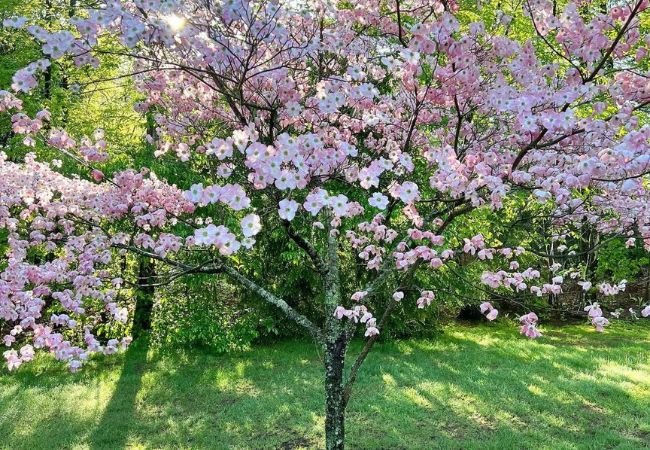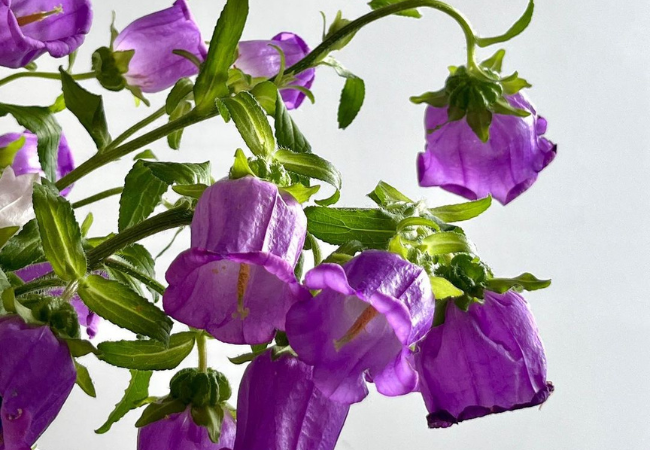Discover the beauty of Dogwood Flowers and learn how to grow them in your garden. This guide covers planting, care and problem-solving tips for these iconic American spring flowers.
Dogwood Flowers are a beloved sight in many parts of the USA. Their beautiful flowers brighten up our landscapes every spring. Let’s explore these special trees and learn how to grow them in our own yards.
Here’s the information about Dogwood Trees in a chart format:
| Aspect | Details |
|---|---|
| Botanical Name | Cornus spp. |
| Common Name | Dogwood |
| Plant Zone | USDA zones 3-8 (varies by species) |
| Sun Exposure | Full sun to part shade |
| Soil Type | Well-drained, fertile, slightly acidic soil |
| Watering Needs | Moderate |
| Growth Habit | Deciduous tree or shrub |
| Height/Spread | Height: 15-30 feet Spread: 15-30 feet |
| Special Features | Attractive flowers, colorful fall foliage, red or yellow winter stems, wildlife attraction |
What are Dogwood Flowers?

Dogwood Flower are small to medium-sized trees that are famous for their pretty flowers. These flowers, which can be white or pink, appear in spring before the leaves grow. Dogwoods are native to North America and are even the state tree of Virginia and Missouri.
For more information about dogwood species, check out the U.S. Forest Service’s fact sheet.
Why Plant Dogwood Flower?
- Beautiful spring flowers
- Nice fall colors
- Attract birds and wildlife
- Work well in many types of gardens
How to Plant a Dogwood Flower
When to Plant
The best time to plant dogwood Flowers is in the spring or fall. To find out the best planting time in your area, use the USDA Plant Hardiness Zone Map.
Where to Plant
Dogwoods like partial shade. A spot that gets morning sun and afternoon shade is perfect.
Soil
These Flower prefer well-drained, slightly acidic soil. Learn more about soil types from the USDA Natural Resources Conservation Service.
Planting Steps
- Dig a hole twice as wide as the root ball and just as deep
- Place the tree in the hole at the same depth it was in its container
- Fill with soil and water well
Caring for Your Dogwood Tree
Water
Water your young dogwood regularly for the first two years. After that, water during dry spells.
Fertilizer
Feed your dogwood with a balanced, slow-release fertilizer in spring. The Clemson Cooperative Extension offers advice on fertilizing dogwoods.
Pruning
Prune your dogwood in late winter to remove dead or crossing branches.
Mulching
Apply a 2-3 inch layer of mulch around the base of the tree, but keep it away from the trunk.
Common Problems and Solutions
- Dogwood Anthracnose: This is a fungal disease that can harm dogwoods. Learn how to prevent and treat it from the University of Kentucky Extension.
- Dogwood Borer: This insect can damage the tree’s bark. The Virginia Cooperative Extension offers tips on managing this pest.
- Leaf Scorch: This happens when the tree doesn’t get enough water. Make sure to water during dry periods.
Different Types of Dogwoods
- Flowering Dogwood (Cornus florida): The most common type, with white or pink flowers
- Kousa Dogwood (Cornus kousa): Blooms later than flowering dogwood
- Pacific Dogwood (Cornus nuttallii): Native to the western United States
For more information on dogwood varieties, visit the Missouri Botanical Garden’s plant finder.
Interesting Facts About Dogwoods
- The “flowers” we see are actually bracts (modified leaves), not true flower petals
- Native Americans used dogwood bark and roots for medicine
- The wood of dogwood trees is very hard and was once used to make golf club heads
Dogwood Flowers are a great addition to any yard. They’re beautiful, attract wildlife and are part of our American heritage. With a little care, you can enjoy these lovely trees in your own garden for many years.
For more gardening tips and tree care advice, visit the National Gardening Association, a non-profit educational website.
For more gardening tips and plant care guides, visit usagardenhub.com.






One comment on “Dogwood Flowers : A Symbol of American Spring”